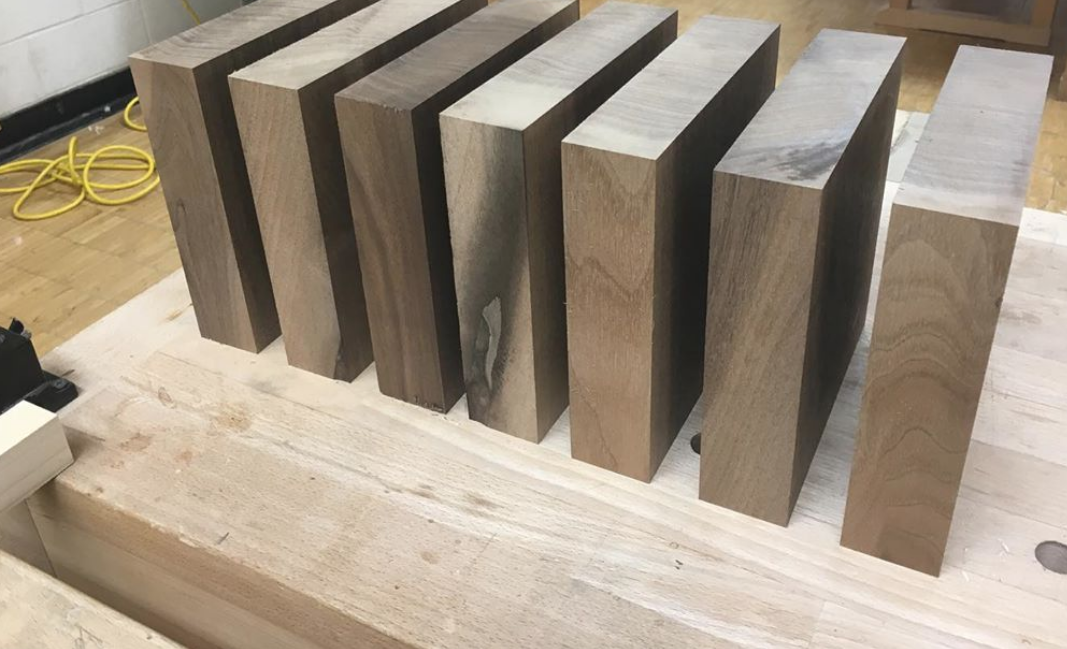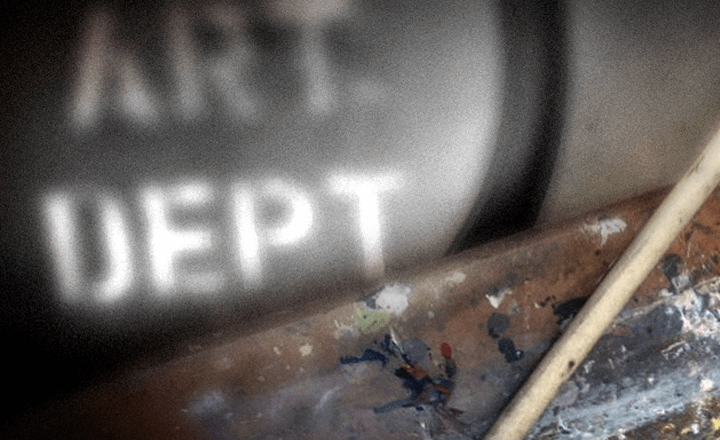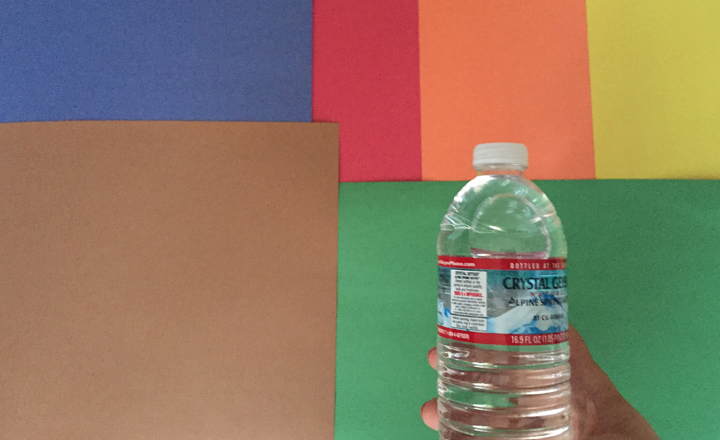I’ve been teaching at American River College since 2003.
And wat I love about the school’s Art New Media program is its original stated dedication to ‘an art and design education in a digital environment that honors traditional art foundations.’
Meaning: Students will learn the nuance and process that others pay a lot of money to learn at an expensive design school – plus, software training.
Because learning just the software and not learning wat it’s supposed to be used for is really a vocational dead end. Mostly, imho.
Also, I believe this makes a güd design student:
“There are the kind of students who wait to be told what to do, how to do it, & then need reassurance that they did it the “right” way.
“And there are the kind of students who figure it out by trying, seeing what happens, & learning from failures.
“Be the second kind of student.
—Mitch Goldstein, Twitter, 17 January 2020
Educator Mitch Goldstein teaches at RIT and his posts on social media are no-nonsense cheat codes for design students.
So is his manifesto – and is his book – released a few years after I originally typed up this blog post.
And his old twitter thread, below, also just happens to explain wat my classes are all about:
“Time for a thread. I have had a few questions recently about formal design education, eg design school (which I will refer to as DS) vs. free/low cost online education, eg Youtube, Skillshare, et al. (which I will refer to as YT).
“Naturally, I have some thoughts.
“I think a big difference is the idea of ‘training’ vs. ‘education.’ Training is about learning how to do specific things with predictable outcomes and predefined tools. Education is a deeper understanding of ideas and context, as well as more open processes & methods.
“YT is very, very good at training. If you want to learn tools, techniques, and ‘how to’ you can do pretty damn good for free or very low cost with online classes/tutorials/demos. YT is also very good at getting up to speed ASAP on the newest, RIGHT NOW tools.
“DS is not as good at training, and before teaching some brand new tech you need a faculty member to learn it, and be able to put it into a class, possibly get curricular approval, etc …. The Ivory Tower Machine™ can get in the way bigtime.
“DS also teaches you a specific training topic usually by one person in one class in one semester, which is then referenced and theoretically reinforced in other classes. YT lets you watch a dozen videos by a dozen people on the same thing to get a more rounded understanding.
“YT has a massive, expansive set of things it can train you on – way more than can fit in 4 years of a BFA. You can just keep following the recommendation algorithm forever and learn how to use almost everything. And yes you can do it in your jammies with your dog in your lap.
“DS is also usually ABSURDLY expensive. Full stop.
“DS has a lot more context and a lot more deeply examined connections within its education. You have the context of a bunch of people in a room together bouncing ideas off each other. You have a strongly developed curricula including non-design topics.
“DS also provides way, way more theory and history. Very few people trying to learn design online take a history class. Or a writing class. Or a literature class. This is the ‘education’: the stuff BEYOND the obvious stuff. This is part of what takes training to education.
“The importance of in-person, face to face critique cannot be understated – I have yet to see anything come close online. Yes I have been in Slack crit channels, and I have seen Google Crit Hangouts and while by no means useless, there is a lot missing vs. in-person dialog.
“So … what should you do? Ideally, you should do both. YT & DS both have lots to offer and ideally everyone would use both together to get what they need. For DS cost & time & geography are obviously huge issues, especially for those who are not from privileged backgrounds.
“But, and this is really, really important: Anyone who tells you that YT is a one-to-one substitute for a formal design education, and you can do the same exact thing online for free or for $20/month is completely full of crap. That is absolutely untrue.
“Both have value. Both offer a way into industry. Both can be good or can be bad for someone. Regardless of $, either one can be the right way or the wrong way to learn. Anyone who speaks about this stuff in simple absolutes should be ignored. It’s never that simple.
“For me personally: Going to DS was a life-changing experience that I was desperately in need of. I knew I would go into debt even with some family $ support. I was prepared to do so. I truly believe I would not have gotten remotely close to where I am today without it.
“Generally, I believe DS makes you a better creative practitioner. BUT depends a LOT on the individual. There are people who are brilliant & successful who never went to school. There are people who went to elite design schools who can’t design their way out of a paper bag.
“An added bonus to DS is the community, which is much stronger and more actionable than an online forum. 95% of projects I have gotten came from former teachers, clients who knew or had a connection to the school, and former classmates. The network is important.
“So to answer the big question: Should you go to design school, or just use YouTube?
“Yes.
“Couple of more thoughts: I’m seeing comments about how teachers at DS are antiquated & tired & coasting thru teaching while they enjoy tenure. While yes, there are teachers like this, the vast majority are active practitioners AND insanely curious about their field.
“A hell of a lot of what educators are paid for is being actively interested in stuff. It’s literally in the job description. That saying ‘Those who can’t, teach’ is utter bullshit. It should be ‘Those who can, and do, and can explain why and how they can and do, teach.’
“I personally look at teaching as a part of my creative practice. It feeds my work and my work feeds my teaching. Much of my motivation is being curious. Unfortunately, some of YTs motivation is view counts. Just something to be aware of: Understand WHO is teaching you.
“I am also seeing comments about how YT is just a bunch of unqualified youngsters making worthless videos. This is also a gross mischaracterization. There is an incredible, massive, highly accessible wealth of knowledge online and you should not be so quick to dismiss it.
“Do you need to vet YT videos to make sure they are accurate? Sure. But if someone is posting to YT they are gonna be easily findable online. Look at their portfolio. Check their qualifications. See if they are worth listening to. (You should ALSO do this with your DS teachers.)”
—Mitch Goldstein, Twitter
I’ll also throw in Gerry O. Simpson’s
“Don’t let your taste get in the way of your work.”
Because that’s a whole other battle, since students are in school to learn and refine their tastes, instead of just relying on wat they already kno when they walk thru the door.
“I’ve never done that before …”
That’s why you’re here. To do things you’ve NEVER done before.
Yes, I’ve made this post required reading for my newest students. If you’ve made it this far, you’re in pretty güd shape.
—steve mehallo
Flommist Steve Mehallo is a graphic designer, illustrator, font designer, educator, foodie and gadfly. He is the creator and founder of FLOMM! Photos: Elements of furniture-making by Mitch Goldstein.
PLEASE SUPPORT FLOMM
TIPS + DONATIONS DISCREETLY ACCEPTED

















